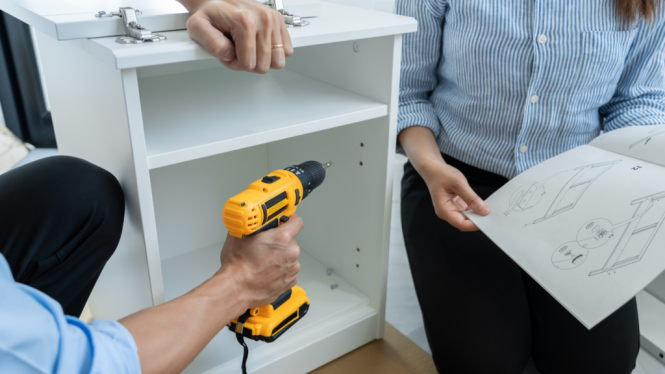

Furniture assembly nightmares are a common experience for many DIY enthusiasts. From misplaced screws to confusing instructions, the process can often feel more like a struggle than a satisfying accomplishment. This comprehensive guide delves into the world of furniture assembly nightmares, uncovering the most frequent pitfalls and offering actionable solutions for transforming frustrating assembly experiences into smooth, satisfying successes.
Understanding the Root Causes of Furniture Assembly Frustration
Common Mistakes in Furniture Assembly
Furniture assembly often turns into a frustrating experience due to a number of common mistakes. From poor planning to a lack of attention to detail, these errors can lead to a mountain of challenges during the entire process. A lack of preparation and a failure to carefully follow instructions can lead to mismatched parts, missing screws, and incorrect measurements. Inadequate tools, like damaged screwdrivers or a poorly maintained drill, can make the task even more difficult. Ultimately, this can be very disruptive and disappointing.
Mastering the Art of Preparation for a Smooth Assembly
Planning Your Assembly Process
Before you even begin unpacking, careful planning is key to minimizing potential assembly issues. Take the time to carefully study the instructions—don’t just skim them! Read the manual thoroughly to understand the entire process and anticipate potential problems. Look for diagrams and illustrations and ensure you have all the necessary tools and parts. Create a checklist. For example, marking the location of each piece and screw in the instructions, will save valuable time and reduce the risk of errors.
Effective Techniques for Following Instructions
Decoding Complicated Instructions
Often, furniture assembly instructions can be tricky to follow. Pay close attention to each step and make sure to mark the steps in the order they should be done to avoid mistakes.
Use caution when working with different tools. Knowing what tool to use when, greatly reduces the possibility of errors.
Leveraging the Power of Visual Aids and Diagrams
Understanding Furniture Assembly Diagrams
Numerous furniture assembly instructions include diagrams and illustrations. These visual aids can be extremely helpful in understanding the intricate parts of the assembly and the sequence of steps required. Carefully analyzing the diagrams will help you avoid mismatches and missing parts during the construction.
Advanced Strategies for Problem Solving
Tackling Difficult Assembly Challenges
Even with preparation and thorough instructions, unexpected problems can occur during assembly. Maintaining a calm attitude and a positive mindset can help overcome these challenges. If you encounter a difficult problem, try consulting online forums or seeking advice from experienced DIYers. Don’t be afraid to ask for help from a friend or family member if needed.
Tips for Ensuring a Successful Furniture Assembly
Choosing Quality Furniture
Purchasing furniture with high-quality materials and well-designed components can greatly reduce the likelihood of problems during assembly. Often, pieces are engineered to fit together without unnecessary frustration. Choose brands that prioritize quality and ease of assembly.
Identifying Potential Problems Ahead of Time
Identifying and Addressing Potential Challenges
Understanding common problems, and the potential for assembly issues, ahead of time will help you better plan and manage the assembly process. By proactively anticipating potential issues, you can ensure that the process flows smoothly from beginning to end.
Understanding the Assembly Process
Planning and Preparing
Understanding the assembly process and the steps involved is crucial. Careful planning before starting is key. This includes gathering all needed tools, checking that all components are present, and thoroughly reviewing the assembly instructions.
Frequently Asked Questions
What are some common tools I need for furniture assembly?
Common tools for furniture assembly include screwdrivers (Phillips and flathead), wrenches, Allen keys, a drill (if needed), and a level. Using these tools ensures that the assembly is completed correctly and efficiently. Additionally, measuring tapes and work gloves can assist with the quality of the process and the comfort of the task.
How do I avoid damaging the furniture during assembly?
To avoid damaging the furniture during assembly, be mindful of the type of screws used. Always start with small screws or bolts so as not to damage the wood. Carefully use your tools. Protect the surface of the furniture with cloths or pads when necessary. Double-checking your work at each step is also vital to quality. Avoid using excessive force when inserting parts.
In conclusion, mastering furniture assembly isn’t about avoiding frustration entirely, but about equipping yourself with the right tools, strategies, and mindset to overcome common challenges. By understanding the potential pitfalls, and focusing on meticulous planning and execution, you can transform your next furniture assembly project from a potential nightmare to a satisfying experience. Remember, a little preparation goes a long way! To continue learning more about furniture assembly, check out our related articles on our blog.